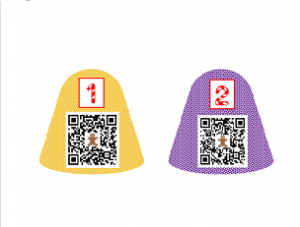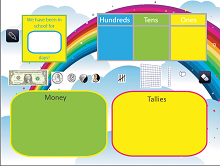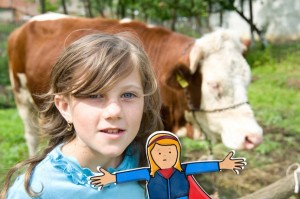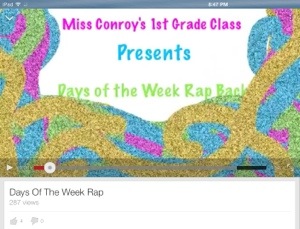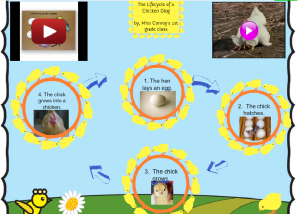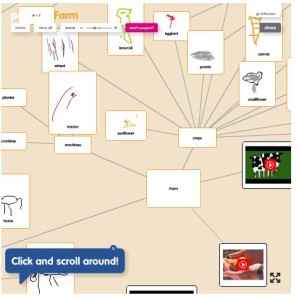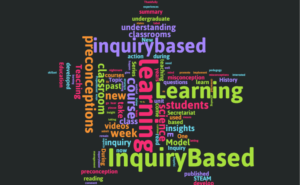 For the past two school years, I have been blessed to develop a curriculum and teach an elementary STEAM program for students in grades K-6. Out of my love for STEAM Education, I decided to pursue an endorsement in STEM for my Pennsylvania Teaching Certificate. I will be able to take the needed courses online through Wilkes University! This past week I began one of the required courses, Inquiry-Based Learning. After reading and watching videos of inquiry-based learning in action, I have come to the realization that my understanding of Inquiry-Based education was rather narrow and shallow. I am looking forward to deepening my understanding during this semester.
For the past two school years, I have been blessed to develop a curriculum and teach an elementary STEAM program for students in grades K-6. Out of my love for STEAM Education, I decided to pursue an endorsement in STEM for my Pennsylvania Teaching Certificate. I will be able to take the needed courses online through Wilkes University! This past week I began one of the required courses, Inquiry-Based Learning. After reading and watching videos of inquiry-based learning in action, I have come to the realization that my understanding of Inquiry-Based education was rather narrow and shallow. I am looking forward to deepening my understanding during this semester.
This week we read a summary of the main points from the book How students learn: History in the classroom published by Donovan and Bransford. The first point in this summary was that “(s)tudents come to the classroom with preconceptions about how the world works. If their initial understanding is not engaged, they may fail to grasp the new concepts and information, or they may learn them for purposes of a test but revert to their preconceptions outside the classroom” (Topic A). I feel that this quote summarizes my feelings as I reflect on my own preconceptions of Inquiry-Based learning and gain new insights.
One of my preconceptions coming into this graduate course is that Inquiry-Based Learning is used only in science classrooms. During my undergraduate studies, I believe I was exposed to Inquiry-Based Learning during my science methods course. That would have been 13 years ago now, so I am a bit fuzzy on the details. During this undergraduate course, however, we were introduced to the 5 E Model where the teacher develops a unit based on student interests that consists of 5 lessons: Engage, Explore, Explain, Elaborate and Evaluate. I developed a unit based around the question “What Makes Day and Night?” for a class of Pre-Kindergarten students. Based on this past experience, I felt that inquiry-based learning was for use solely in science classrooms.
After viewing The Teaching Channel Inquiry-Based Teaching Series that showcasesInquiry-Based Learning in action at Urban Academy in New York City, I have developed new insights (Newell, 2012). In these videos, they demonstrated inquiry being used in both History and Literature classes. Watching these videos opened my eyes to the fact that inquiry can take place in a variety of content areas, not just science, and that inquiry can take many different forms.
As part of our reading this week we read a list of Statements About Inquiry. One statement that spoke to me was “Inquiry teaching is not chaotic — It is a carefully choreographed activity” (Topic B). I often think teachers do not attempt to integrate inquiry-based learning into their classrooms out of fear that it will lead to chaos. In the Capacity Building Series, Secretariat Special Edition #32 published by The Literacy and Numeracy Secretariat of the Ontario Ministry of Education it states: “It is a misconception that inquiry-based pedagogy means letting go of the class and allowing students to self-direct all aspects of their learning” (p. 5). I will admit that I too had a preconception that Inquiry-Based Learning was a class management nightmare waiting to happen. Thankfully, I have gained new insights this week and I can now label my preconception as a misconception! I am hopeful that this course will give me the skill-set I need to implement Inquiry-Based Learning in the classroom!
Some of burning questions, that remain in my mind are: Where does the 5 E Model fit in with Inquiry-Based Learning? Does the 5 E Model promote inquiry-based learning? What are other ways to develop and structure inquiry-based learning experiences? I’m also curious with how Inquiry-based learning is connected to Project-Based Learning as I am also taking a course on this method of teaching as well. If you have any insight on any of these questions, please leave a comment below! I’d also be interested to hear about any preconceptions and misconceptions you had about inquiry-based learning.
References
Donovan, M. S., & Bransford, J. D. (2005). How students learn: History in the classroom (pp. 1-2). Washington, DC: The National Academies Press.
Newell, Beth (Producer). (2012). Inquiry-Based Teaching Series [Video series]. New York, NY: The Teaching Channel Retrieved from: https://www.teachingchannel.org/videos/reasons-for-inquiry-based-teaching
The Literacy and Numeracy Secretariat of the Ontario Ministry of Education (May 2013). Inquiry- based Learning. Capacity Building Series, Secretariat Special Edition # 32. Retrieved from http://www.edu.gov.on.ca/eng/literacynumeracy/inspire/research/CBS_InquiryBased.pdf
Topic A: Personal History Regarding Inquiry Based Learning [EDIM 513-INA Course Content]. Retrieved from https://live.wilkes.edu/d2l/le/content/242169/viewContent/2609367/View
Topic B: Preconceptions of Inquiry [EDIM 513-INA Course Content]. Retrieved from https://live.wilkes.edu/d2l/le/content/242169/viewContent/2609368/View
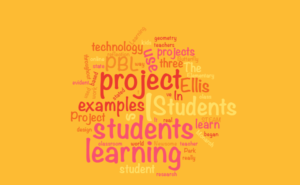 This summer I began taking courses online through Wilkes University to add a STEM endorsement to my Pennsylvania Teaching Certificate. This past week I began one of the required courses, Project Based Learning. In my STEAM classroom, I have designed 9 weeks long projects, however, I look forward to learning how to fully implement Project Based Learning properly in my classroom. During the first week of this course, we viewed videos showcasing three different examples of project-based learning. You can view the videos below.
This summer I began taking courses online through Wilkes University to add a STEM endorsement to my Pennsylvania Teaching Certificate. This past week I began one of the required courses, Project Based Learning. In my STEAM classroom, I have designed 9 weeks long projects, however, I look forward to learning how to fully implement Project Based Learning properly in my classroom. During the first week of this course, we viewed videos showcasing three different examples of project-based learning. You can view the videos below.

